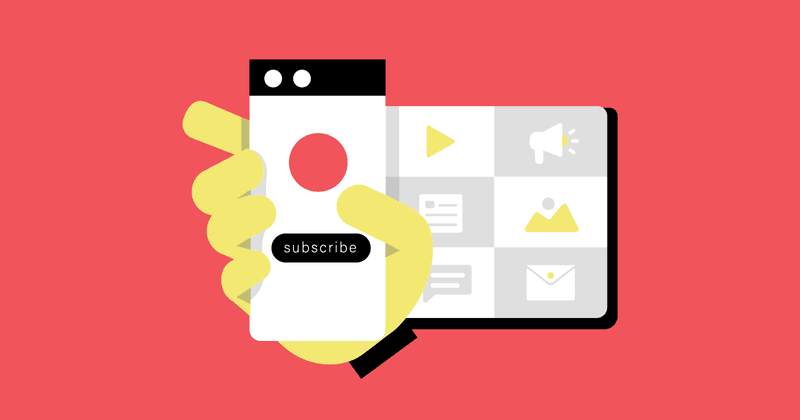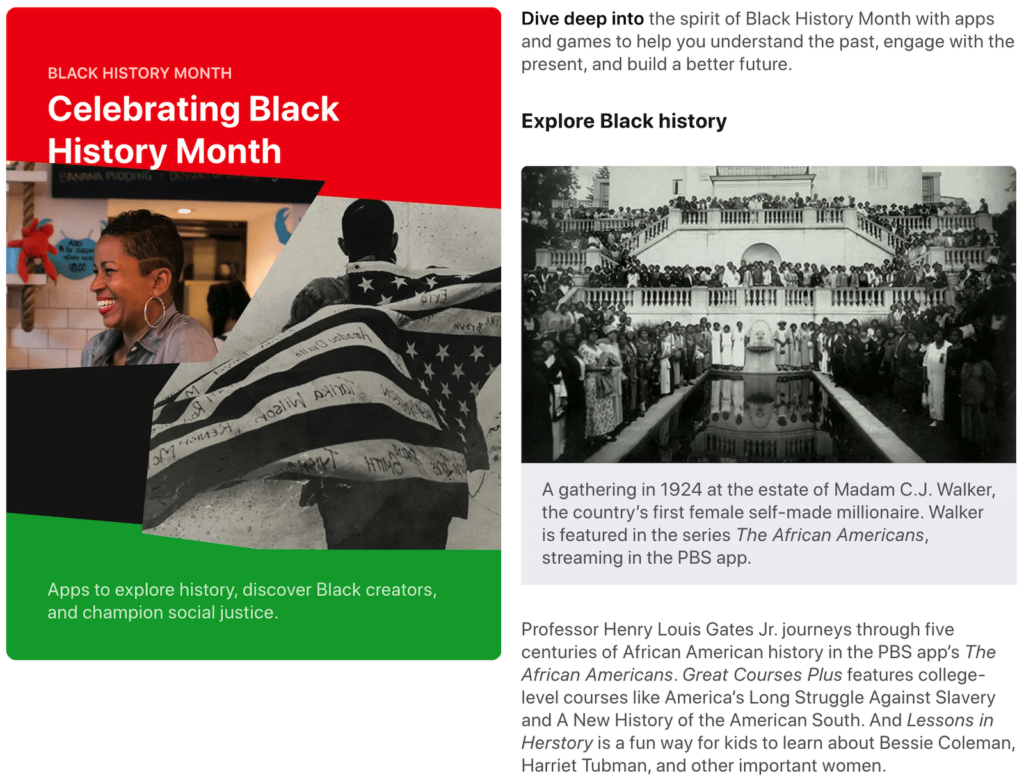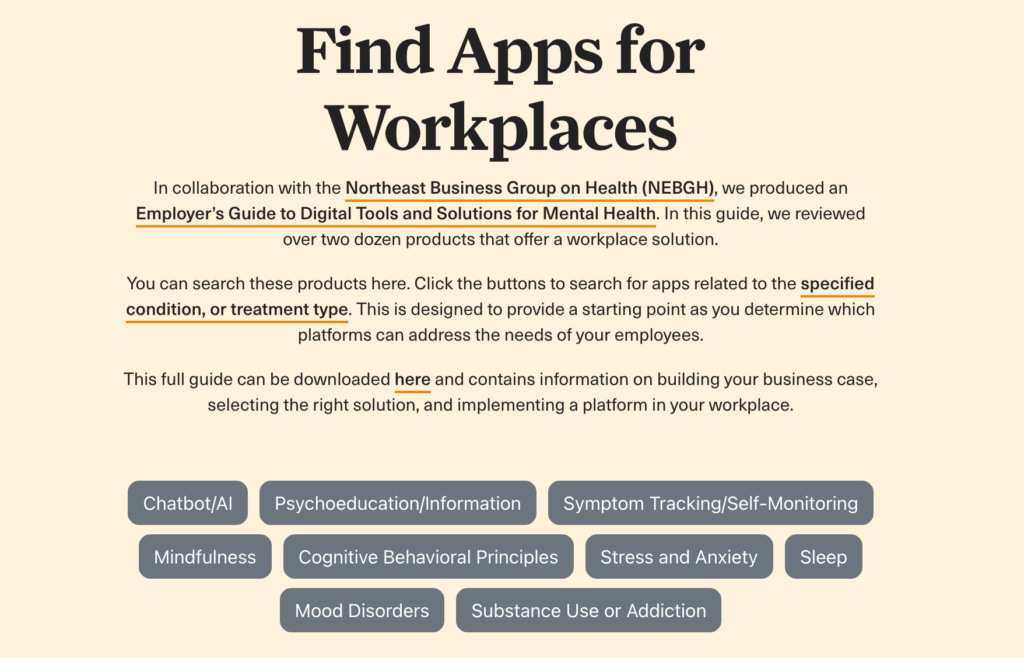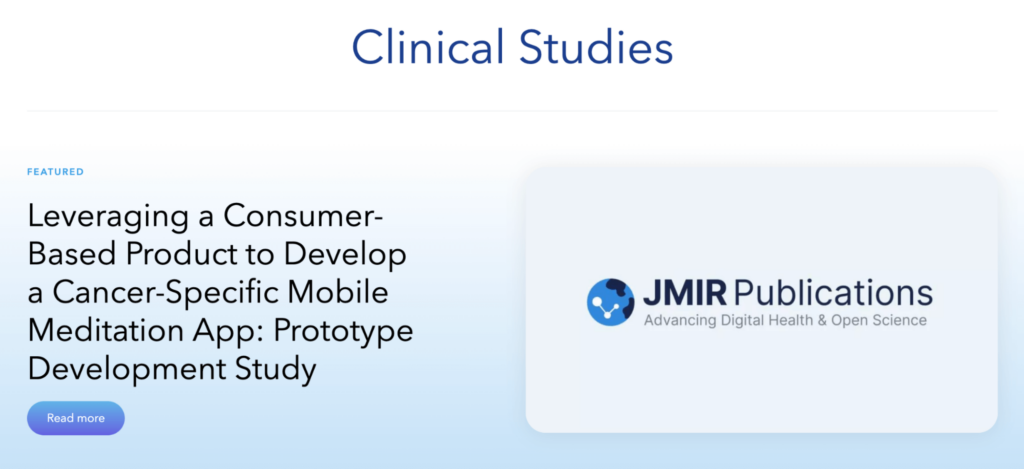PR for subscription apps: 9 tips to succeed when using the press for app promotion
Explore PR approaches to build brand awareness, from engaging journalists early-on to aligning app updates to calendar events.


Peter Meinertzhagen
One search on the App Store for “meditation” will pull up a seemingly endless list of meditation apps, dozens of which have thousands of reviews and downloads. Just one minute of scrolling shows apps that focus on meditation related to yoga, sleep, digital unplugging, religion, anxiety, balancing chakras, visualization and hypnosis, gamification, building habits, mental fitness, and even moon cycles. And the list just keeps growing.
On one hand, this shows us there is a lot of competition in the subscription app space. That part is scary, especially for newer app developers.
On the other hand, thousands of five-star reviews across dozens of apps in hundreds of niches and sub-niches means that even the most well known apps like Headspace aren’t right for everyone. We’re all looking for different solutions to similar problems. That means there’s an infinite amount of digital space available to you, and people out there who are likely scouring the store for an app like yours.
Public relations (PR) can increase your brand awareness, enhancing the likelihood that users will select your app amidst a sea of alternatives on the app store. If your story or brand is striking enough, they might even search for your app by name.
First things first: create a press kit
Creating a press kit is kind of like creating a resume: it has all the basics, and it can be tweaked based on the recipient so you don’t have to start from scratch every time you do outreach.
A press kit will help you create an efficient outreach process so you can pitch a reporter, fill out an App Store featured form, apply to sponsor a conference, reach out to a podcaster, and pitch a guest blog all in the same week — instead of over the course of a month.
Almost every press kit should include:
- Contact details and social links
- High-resolution brand assets and images
- General business info such as location, years in business, etc.
- Bios and headshots for yourself and/or core team members
- Links to previous press coverage
- An elevator pitch of your company/app
For subscription apps, you should also consider adding:
- Information on subscription tiers
- App screenshots and videos
- Short explanation of use cases
While your press kits should remain concise and to-the-point, make sure you’re also telling a story. A reporter who reviews apps in the health space, for example, likely gets dozens of pitches a week. Emotion drives our decision making, so lean on your story — your why — to stand out.
Build your PR strategy
1. It’s never too early to start outreach
Embarking on the journey of app development might seem like a solitary endeavor initially, yet inviting external perspectives early on can be a game changer. Take a leaf out of the book of children’s app Pok Pok. According to Co-founder and CEO Melissa Cash, during the nascent stages of the app, journalists and Apple were among the select few privy to its development. Especially when you harbor grand ambitions for your app, extending an invitation to journalists to participate in your beta can be a wise move.
If you’re in the tech space and you’re creating a subscription app, a lot of journalists want to be along for that ride. They have a lot of opinions about how things should be made and so it’s pretty awesome to show them an early version of your product and say, “Hey, give us feedback every once in a while.”
Melissa Cash, Pok Pok
The dual advantage here is clear. You not only secure invaluable feedback but start building relationships with journalists. This early connection can help with promoting your app when it’s ready to launch and beyond.
2. Create a PR calendar
PR is more effective when you’re as intentional about when you do outreach as how. Create a PR calendar around app updates or events like “awareness” months to create a consistent outreach schedule. You could even apply to be featured on the App Store at a time when you might be more likely to catch the editors’ eye based on your app’s category.
The App Store regularly creates “stories” celebrating events and awareness months throughout the year. Like this one for Black History Month.

The page features apps to help find Black-owned businesses and subscription apps by Black developers, like Goalsetter, a banking and financial literacy app for kids.
Consider syncing your outreach efforts not only with the calendar, but also with the strategic launch of particular features or content that dovetail with these outreach opportunities. For instance, Pok Pok rolled out a significant update during the Lunar New Year, weaving this update into their narrative of celebrating diverse cultures through the app. It’s crucial to articulate the motivations behind your creations, transcending beyond just the features themselves.
Here’s some more inspiration:
- A queer dating app such as HER could apply in February for LGBTQ+ history month
- A budgeting app such as Buddy could pitch in April for financial literacy month
- A creative writing app such as Werdsmith could pitch in November for national novel writing month
Whatever your niche, there’s probably a month or day focused on it, so weave these events into your PR schedule to take advantage of the increased press in the app stores — and elsewhere!
3. Start local with community PR
In a hyperconnected, hyperdigital world, we can often underestimate the power of starting local. We want a spot on @huffpostwomen for your women’s health app or a guest blog featuring your cooking app on that famous influencer’s recipe blog. While it’s an admirable goal, spots like these are harder (and sometimes more expensive) to secure.
We sat down with Ania Wysocka of Rootd on the Sub Club podcast, and she suggested a workaround: “When you don’t have an advertising budget, start with local journalists and tie press releases to key events in the year.”
Local publications and reporters are often easier to reach, which saves you money by avoiding advertising fees and by saving you time. Many local journalists, podcasters, and bloggers are also enthusiastic about promoting local companies.
You don’t need to give up those bigger media placements. Just don’t be afraid to get the PR ball rolling with local media outlets.
4. Cast a wide (but specific) net with media outlets
Your ultimate goal is, of course, to get more subscribers on your app. As such, it’s tempting to focus your efforts on publications that reach your end users.
But there are other folks you should pay attention to: advocates. Let’s say you have a mental health app. You can and should do outreach with publications and bloggers that reach your end users. But you can also work with media outlets that reach counselors or employers who may recommend your app to their patients or employees. For example, OneMind reviews mental health apps for potential users, but they also create reviews for employers who are looking for apps to offer their employees.

“Some of our highest number of referrals actually come from doctors and therapists and folks that share [Rootd] with folks in their community,” says Ania.
Not sure where to start? A simple Google search such as “publications for counselors” or “podcasts for financial advisors” will bring up lists of top journals, podcasts, etc. It also never hurts to take to LinkedIn or Twitter and crowdsource.
5. Think bigger than print and blogs
Seeing your app’s name in black and white will feel great, but don’t stop there. Podcasters, for example, can be a great outreach target for your PR. Many podcasts focus on very specific niches, so if you choose the right podcasts, you’re dropped right in front of a high-intent audience.
And that audience could be huge. In fact, over 60% of U.S. consumers listened to a podcast in 2022, and that number is growing — doubling over the last decade.
Some podcasts may require you to pay for an ad spot, but others are happy to mention your podcast when they believe it’ll be genuinely helpful for their audience.
6. Ride Apple and Google tailwinds
Tech events aren’t just for people in the tech space anymore. Apple’s keynote events, for example, draw viewers from every industry all around the world. Have an app that will look great in Apple’s recently announced Vision Pro? It may be too late to pitch reporters since the keynote has passed, but you can prepare for the future.
How? Well, unless there’s a leak it’s hard to predict the new tech Apple, Google, and other tech giants will announce. But you can guesstimate. For example, Apple hosts Keynote events every spring and fall. And while you may not know exactly what the new releases are, you can bet they’ll announce updates to tech that already exists.
Do you have a subscription app for artists? Schedule PR outreach in the fall when Apple is likely to announce new updates for the iPad and Apple Pencil to take advantage of the buzz.
7. Create original research
While this may not be lucrative when you’re building your user base, starting research early can help you down the road. Original research makes for great PR fodder. Not only can it land you that lucrative spot with a bigger publication — it can also get others to link back to that publication, giving you even more visibility.
For example, meditation app Calm regularly publishes original research and clinical studies that aid them in their PR efforts (and contribute to important causes). Those studies are then cited in other studies, which are linked to by other articles, and so on. That’s a lot of exposure.

8. Get involved (and stay involved)
Creating a calendar for PR is great, but relying so much on it that you ignore current events, breaking news, and conversations on social media can leave you a few steps behind. Compliment your regular calendar with timely and ongoing PR and engagement.
Not sure how to do this? If you have a small team, or even a team of one, staying on top of the news can be hard. You already have so much on your to do list!
We talked with Ed Zitron, CEO of EZPR, on the SubClub podcast. “The big secret of PR,” he said, “is that every journalist pretty much tells you what they want if you go on Twitter and read their tweets and articles.”
The best way to stay in the know is to make sure you’ll see the breaking news in the places where you already spend your time. Scrolling LinkedIn, checking your email, or engaging with followers on Twitter—these platforms offer plenty of ways to keep up. Follow the reporters and publications you’d like to work with and create Google alerts for search topics to be sent to your email so you won’t miss a thing.
9. Pair PR with other marketing tactics
Like any marketing tactic, PR is stronger when paired with other tactics in a holistic marketing strategy. For subscription apps, two lucrative marketing tactics are influencer marketing and organic referrals.
Influencer marketing
Influencer marketing has become a weird blend of PR and advertising. If ads aren’t in your budget, it’s time to lean into the PR side. Influencers want to create content their followers will love, so if you have an app that aligns with their audience, give them something that will help them create that content.
While you can’t send influencers a subscription app to unbox on Instagram, you could gift them a free subscription. Because it’s a gift, not a paid ad spot, they may not share it on their platforms. But they might! It’s a small risk to take that could potentially have incredible returns.
Read our guide to building your first influencer campaign using Branch and RevenueCat.
Organic referrals
“I am a big believer in organic referrals,” says Ania. Her app, Rootd, offers shareable screens for successes and milestones.
“Probably the biggest share comes after [receiving] a success page. There are a couple of screens, and you have the option to share Rootd. I think it’s that aha moment when a user has experienced, for example, relief from a panic attack, they are like, ‘oh my God, I have to share this with so-and-so who I know also struggles with this.’”
Building features into your app that encourage organic referral is a great way to encourage continuous word-of-mouth (without continuous time and money on your part).
It’s okay to start small
There are a thousand ways to spend money on promoting your app, but there are just as many ways to save money, especially when you’re just getting started or have a small team.
“Nine times out of 10, the answer just hasn’t been straight up capital. It’s been other issues that I needed to resolve,” says Ania.
Focus your efforts on PR tactics that are within budget and capabilities — and those that hone in on your target audience.
In-App Subscriptions Made Easy
See why thousands of the world's tops apps use RevenueCat to power in-app purchases, analyze subscription data, and grow revenue on iOS, Android, and the web.



